Did you know that travelers can lose up to 10% of their budget due to unfavorable exchange rates? When planning a trip to this unique African kingdom, understanding the local currency is crucial for a smooth and cost-effective journey.
To avoid unnecessary fees and hassles, it’s essential to plan ahead. In Swaziland, the official currency is the Swazi Lilangeni (SZL), which has a unique relationship with the South African Rand. By knowing how to manage your money effectively, you can save significantly and enjoy your trip to the fullest.
This comprehensive guide will walk you through everything you need to know about handling money in Eswatini, from cost-effective ways to exchange currency to practical payment methods available throughout the kingdom.
Understanding Eswatini’s Currency System
The Swazi Lilangeni is the official currency of Eswatini, and understanding its nuances can enhance your travel experience. When you’re in Eswatini, using the local currency can make your trip smoother and more enjoyable.
The Swazi Lilangeni (SZL): Basic Information
The Swazi Lilangeni (SZL) is the legal tender in Eswatini. It’s essential to know that the SZL is pegged to the South African Rand (ZAR) at a 1:1 exchange rate, making it relatively stable. This stability is beneficial for travelers, as it simplifies currency exchange and understanding prices.
Currency Denominations and Features
Eswatini’s currency is available in various denominations. Banknotes come in E10, E20, E50, E100, and E200, each with distinct colors to help you identify them easily. Coins are available in smaller denominations, including E5, E2, E1, and various cent values. The banknotes feature the portrait of King Mswati III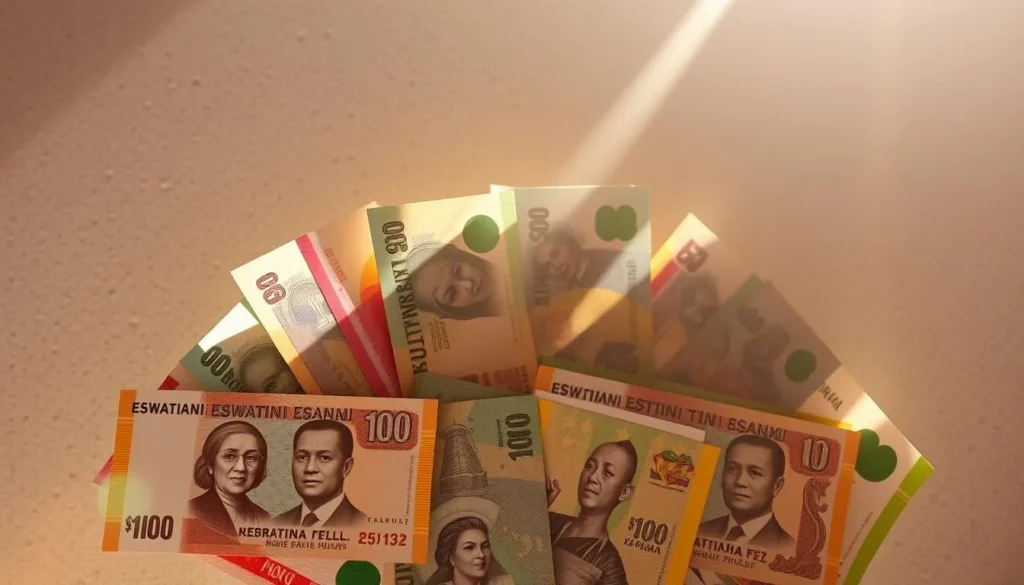 The currency includes security features like watermarks and raised printing to ensure authenticity.
The currency includes security features like watermarks and raised printing to ensure authenticity.
Exchange Rates and Currency Conversion
As you plan your trip to Eswatini, understanding the current exchange rates can help you make informed decisions about your travel budget.

Current USD to SZL Exchange Rates
The current exchange rate between the US dollar (USD) and the Swazi Lilangeni (SZL) is a crucial piece of information for travelers. A quick check of the current rate can help you make informed decisions about when to exchange your money.
Understanding the Mid-Market Rate
The mid-market rate, also known as the interbank rate, is the average exchange rate between currencies. It’s considered the fairest rate as it’s not influenced by commercial banks’ markups. Understanding this rate helps you gauge whether you’re getting a good deal when exchanging currency.
How Exchange Rates Impact Your Travel Budget
Exchange rates have a direct impact on your travel budget. A favorable exchange rate can stretch your dollars further, while an unfavorable rate can increase your expenses. Here are some key points to consider:
- Exchange rate fluctuations can significantly impact your purchasing power in Eswatini.
- A stronger US dollar against the Lilangeni means your money goes further.
- Monitoring exchange rate trends can help you decide when to exchange larger amounts.
- Understanding the relationship between currencies helps you adjust your spending throughout your journey.
By staying informed about exchange rates, you can make informed decisions to optimize your travel budget.
Best Ways to Exchange Currency for Eswatini
Knowing how to exchange your money for Eswatini’s local currency can save you a significant amount. When traveling, it’s essential to be aware of the best ways to exchange your currency to get the most favorable rates.
Should You Exchange Money Before Your Trip?
It’s a good idea to exchange some money before your trip to have local currency for initial expenses. However, exchanging too much can lead to losses if your trip plans change.
Currency Exchange Options in Eswatini
Once in Eswatini, you can exchange currency at banks, currency exchange offices, or some hotels. Always compare rates to get the best deal.
Avoiding Poor Exchange Rates and Hidden Fees
To avoid losing money to poor exchange rates and hidden fees, consider using modern financial services like the Wise Multi-Currency Card, which offers near mid-market exchange rates and transparent fees.

- Always decline Dynamic Currency Conversion (DCC) when making card payments or ATM withdrawals.
- Be cautious of services advertising “no commission” or “zero fees,” as they might offer worse exchange rates.
- Opt for fewer, larger ATM withdrawals to minimize per-transaction fees.
- Contact your bank to understand their foreign transaction fees before your trip.
Cash vs. Cards: Payment Methods in Eswatini
To navigate Eswatini’s economy effectively, you need to know when to use cash versus cards. Both have their place in your travel plans, and understanding their roles can help you save money and avoid unnecessary hassles.
When to Use Cash in Eswatini
Cash is king in many rural areas of Eswatini, where card facilities might be scarce. It’s also a good idea to carry some local currency, the Swazi Lilangeni (SZL), for small purchases or at local markets.
Credit and Debit Card Acceptance
Major credit and debit cards are widely accepted in urban areas, hotels, and tourist facilities. However, it’s always a good idea to have some cash on hand, especially when venturing into rural areas.
Dynamic Currency Conversion: What to Watch For
When making a purchase or withdrawing cash, you might be offered the option to be charged in your home currency instead of SZL. This is known as Dynamic Currency Conversion (DCC), and it often comes with additional fees and a less favorable exchange rate. To avoid these extra costs, always choose to be charged in the local currency, SZL.
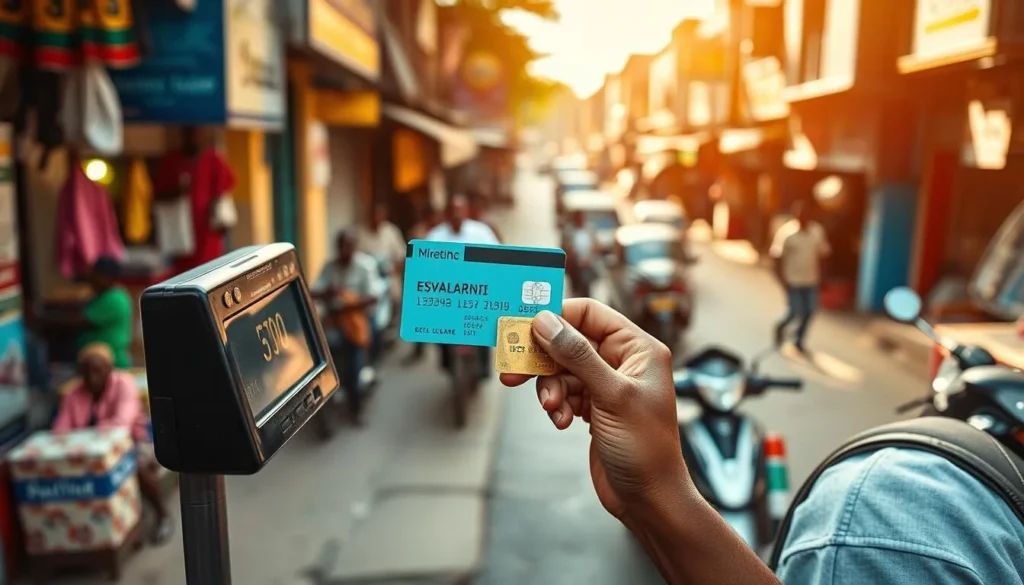
| Payment Method | Advantages | Disadvantages |
|---|---|---|
| Cash | Widely accepted in rural areas, good for small purchases | Risk of loss or theft |
| Cards | Convenient, widely accepted in urban areas | May incur foreign transaction fees, risk of DCC |
By being mindful of these factors, you can make the most of your trip to Eswatini and enjoy a hassle-free experience.
Travel Money Cards for Visiting Eswatini
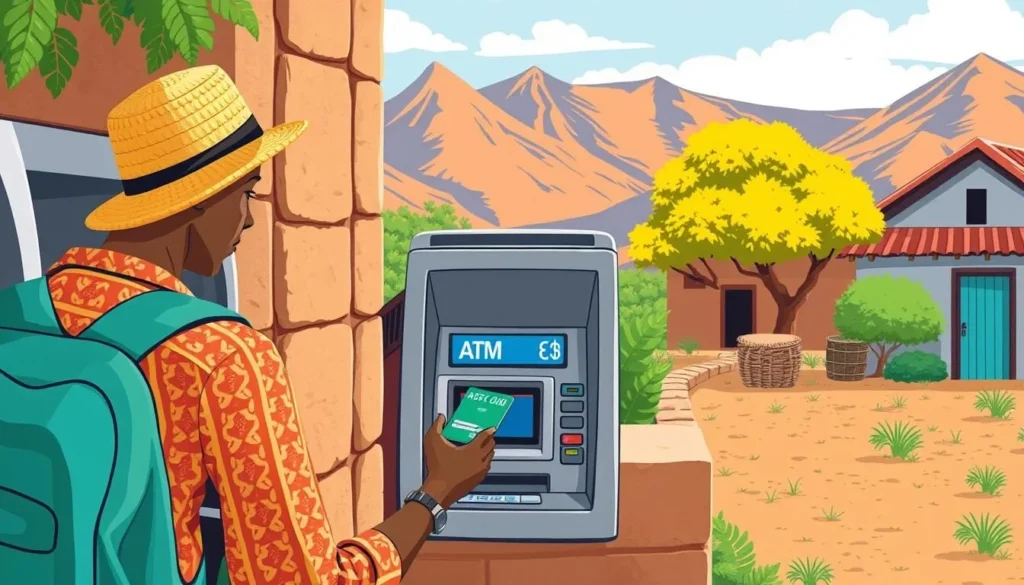
For U.S. travelers visiting Eswatini, selecting an appropriate travel money card is crucial for managing expenses efficiently. Travel money cards offer a convenient and secure way to carry funds while abroad.
Benefits of Using Travel Money Cards
Travel money cards provide several benefits, including competitive exchange rates and low transaction fees. They also offer enhanced security features, such as virtual cards and transaction notifications, making them an attractive option for travelers.
Top Travel Money Cards for U.S. Travelers
Several travel money cards cater to the needs of U.S. travelers visiting Eswatini. Some top options include:
- The Wise Multi-Currency Card: Known for its flexibility and low fees, this card allows you to hold and spend in over 40 currencies, including the Swazi Lilangeni.
- Revolut: Provides competitive exchange rates, free ATM withdrawals up to $300 monthly, and advanced security features.
- The Charles Schwab High Yield Investor Checking debit card: Offers unlimited ATM fee rebates worldwide, ideal for travelers who need frequent cash access in Eswatini.
When selecting a travel money card, consider factors beyond just fees, such as ATM access in Eswatini, customer service availability while traveling, and emergency card replacement options.
ATM Access and Withdrawal Strategies
To make the most of your travel budget in Eswatini, learning about ATM access and withdrawal strategies is key. When traveling, you’ll likely rely on ATMs to access local currency, the Swazi Lilangeni (SZL).
Finding ATMs in Eswatini
ATMs are readily available in major towns and tourist areas. You can find them in bank branches, shopping malls, and some hotels. Using ATMs located inside secure areas can minimize your risk.
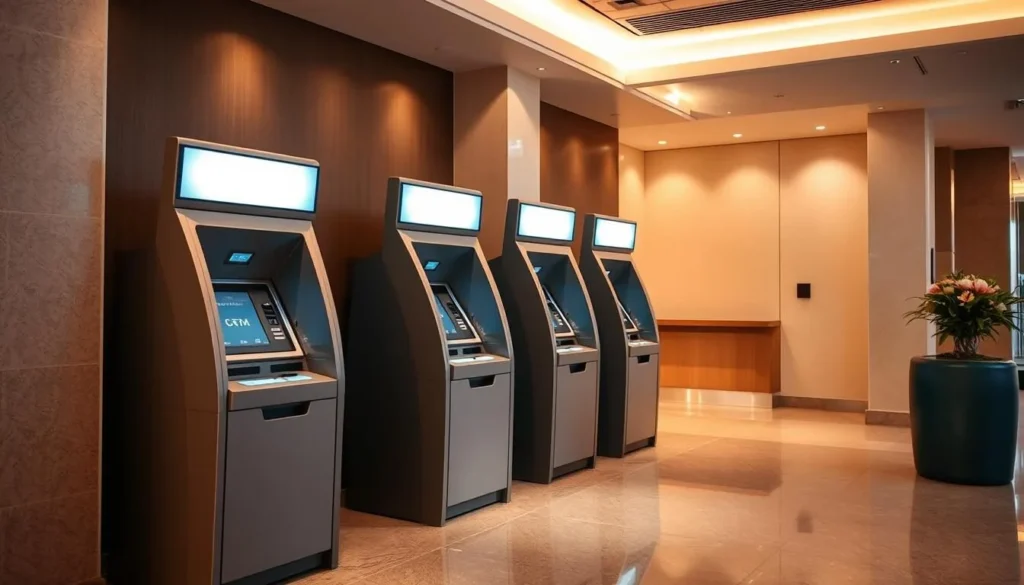
ATM Fees and How to Minimize Them
Be aware that ATM fees can add up quickly. To minimize these fees, use ATMs affiliated with your bank or those that offer low foreign transaction fees. Some banks also offer reimbursement for ATM fees incurred abroad.
| Bank | ATM Fee | Foreign Transaction Fee |
|---|---|---|
| Bank A | $2 per transaction | 1% |
| Bank B | $0 (reimbursed) | 0% |
| Bank C | $3 per transaction | 2% |
Safety Tips for ATM Withdrawals
Crime is a concern in Eswatini, so use ATMs in well-lit, busy areas, and be cautious of skimming devices. Shield your PIN, avoid counting cash at the ATM, and consider having someone with you for larger withdrawals.
- Choose ATMs in secure locations like bank branches or shopping malls.
- Be aware of potential skimming devices.
- Shield your PIN entry.
- Avoid counting cash at the ATM.
Budgeting for Your Eswatini Trip
Your Eswatini adventure starts with budgeting; here’s how to do it right. Effective budgeting ensures that you can enjoy all that Eswatini has to offer without financial stress.
Average Daily Costs in Eswatini
Understanding average daily costs in Eswatini is crucial for planning. On average, travelers can expect to spend around E500-1000 per day, depending on their travel style and accommodation choices.
Budget, Mid-Range, and Luxury Spending Options
Eswatini caters to various budgets. For budget travelers, costs can be minimized by opting for local eateries and public transport. Mid-range travelers can enjoy a mix of comfort and local experiences, while luxury travelers can indulge in high-end accommodations and exclusive activities.
Money-Saving Tips for Travelers
To save money while traveling in Eswatini, consider the following tips:
- Travel during Eswatini’s shoulder seasons (April-May or September-October) for lower accommodation rates.
- Eat at local restaurants and food stalls for authentic cuisine at lower prices.
- Use public transportation like minibuses (kombis) for affordable travel between towns.
- Purchase a local SIM card with a data package to save on roaming charges.
- Take advantage of free activities like hiking and visiting local markets.

Money Management Throughout Your Trip
Effective money management is crucial for a stress-free trip to Eswatini. To ensure a smooth journey, it’s vital to have a strategy in place for managing your finances.
Managing Your Money
You can manage your money effectively by combining different payment methods. This approach allows you to be prepared for various situations you might encounter during your travel.
Combining Payment Methods
Using a mix of cash, credit cards, and debit cards gives you maximum flexibility. It’s also a good idea to have some local currency for when you arrive.
Tracking Expenses
To stay within your budget, track your expenses using apps like Trail Wallet or TravelSpend. You can also take photos of receipts with your phone to keep accurate records.
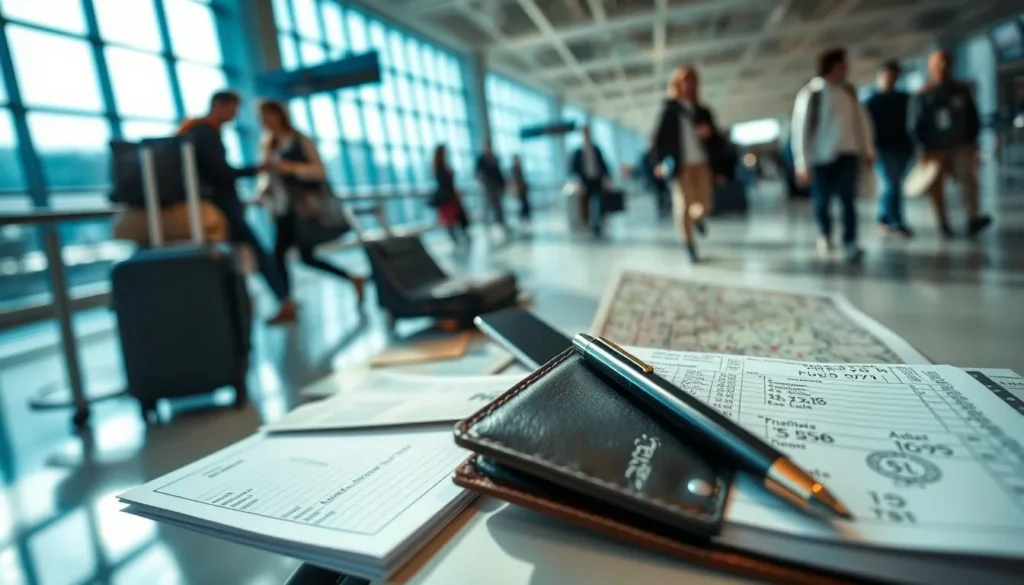
Digital Payment Options in Eswatini
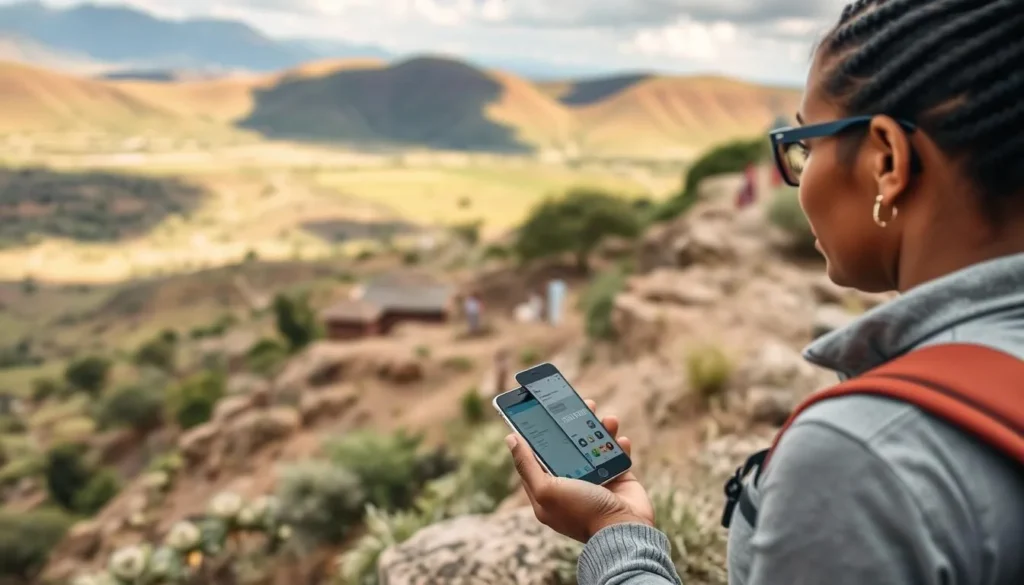
As you prepare for your trip to Eswatini, understanding the digital payment landscape can significantly enhance your travel experience. With reliable internet connectivity in urban areas, you can conveniently access various digital payment options.
Mobile Payment Apps and Services
Eswatini offers various mobile payment apps and services, making transactions easier for travelers. Mobile data coverage is generally good in urban areas and along major highways, allowing for reliable access to online banking services.
Internet Banking Access While Traveling
Before your trip, ensure your banking apps are updated, and you’ve enabled any necessary travel notifications. Many banks require additional security verification when detecting logins from new international locations, so have your phone accessible to receive verification codes.
- Notify your bank of your travel dates to prevent security systems from flagging your international logins as suspicious activity.
- Consider setting up two-factor authentication for your banking apps.
- Avoid using public Wi-Fi networks when accessing financial services.
Safety and Security for Your Money
Your financial security is paramount when visiting Eswatini. Ensuring that your money and cards are safe requires some basic precautions and knowledge.
Protecting Your Cash and Cards
To protect your money and cards, use a hotel safe or a secure bag. Be mindful of your surroundings, especially in crowded areas or tourist hotspots.
Common Financial Scams to Avoid
Be cautious of scams that target tourists. Avoid using ATMs in isolated areas, and always check the exchange rates before making a transaction. Be wary of dynamic currency conversion services that might offer unfavorable rates.
What to Do If Your Wallet Is Stolen
If your wallet is stolen, act quickly. Report the theft to the local police by calling 999 or visiting the nearest station. Contact your bank and credit card companies to report the incident and request replacements. You can also reach out to the U.S. Embassy in Mbabane for assistance with emergency travel documents or other consular services.
Local Payment Etiquette and Customs
Cultural sensitivity is key when handling financial transactions in Eswatini. Understanding the local customs and etiquette surrounding money can significantly enhance your travel experience.
Tipping Practices
In Eswatini, tipping is not mandatory but is appreciated for good service. Typically, a 10% tip is considered sufficient in restaurants and for tour guides. However, it’s always best to check with your service provider or locals for the most appropriate tipping practices.
Bargaining Expectations
Bargaining is a common practice in local markets. Be prepared to negotiate prices, but do so respectfully. Start with a lower offer than you’re willing to pay, and be prepared to compromise. Remember, the goal is to reach a mutually agreeable price.
Cultural Considerations
When handling money, use your right hand or both hands, as the left hand is associated with personal hygiene. Avoid counting large amounts of money in public, and refrain from displaying wealth. When paying, hand money directly to the person rather than placing it on a counter.
| Cultural Practice | Description |
|---|---|
| Handling Money | Use right hand or both hands |
| Counting Money | Avoid in public, especially large amounts |
| Paying for Goods/Services | Hand money directly to the person |
Swaziland (Eswatini): Ultimate Travelers Guide to Currencies & Payments
As you prepare for your trip to Eswatini, understanding the local currency and payment methods is crucial for a smooth travel experience. Eswatini, officially known as the Kingdom of Eswatini, uses the Swazi Lilangeni (SZL) as its official currency, which is pegged to the South African Rand (ZAR) at a 1:1 exchange rate.
Key Currency Facts to Remember
To navigate Eswatini’s economy effectively, it’s essential to grasp some key currency facts. The Swazi Lilangeni is available in various denominations, and it’s advisable to have some local currency for when you arrive. You should be aware that while major towns and tourist areas may accept credit and debit cards, carrying some cash is recommended, especially when venturing into rural areas.
- Always have some local currency (SZL) for initial expenses upon arrival.
- Understand that the SZL is pegged to the ZAR, simplifying exchanges between the two currencies.
Essential Payment Tips for Travelers
When it comes to making payments in Eswatini, having a mix of payment methods can be beneficial. Informing your bank of your travel plans can prevent your transactions from being flagged as suspicious. Additionally, consider using a travel-focused card like the Wise Multi-Currency Card to avoid foreign transaction fees and get better exchange rates.
- Decline Dynamic Currency Conversion (DCC) and choose to pay in the local currency (SZL).
- Keep your payment methods diversified for maximum flexibility and security.
By being informed about the local currency and adopting smart payment practices, you can enjoy a hassle-free trip to Eswatini.
The South African Rand Connection
The currency landscape in Eswatini is characterized by a special connection with the South African Rand. The Swazi Lilangeni (SZL) is the official currency, but the South African Rand (ZAR) is also accepted as legal tender at a 1:1 exchange rate.
Understanding the 1:1 Exchange Rate
The 1:1 exchange rate between the Swazi Lilangeni and the South African Rand simplifies travel to Eswatini, especially for those coming from South Africa. This means you can use either currency interchangeably, making it convenient to travel without needing to exchange your money.
| Currency | Exchange Rate | Acceptance |
|---|---|---|
| Swazi Lilangeni (SZL) | 1:1 with ZAR | Widely accepted |
| South African Rand (ZAR) | 1:1 with SZL | Widely accepted, especially near borders and tourist areas |
When to Use Rand vs. Lilangeni
While both currencies are accepted, there are situations where one might be preferred over the other. For instance, some smaller vendors in rural areas may prefer Swazi Lilangeni, while larger establishments and tourist-friendly businesses are generally comfortable with either currency. If you’re planning to continue your journey to South Africa, having Rand can be useful as Lilangeni is not accepted there.
Currency Restrictions and Customs Regulations
Understanding Eswatini’s customs regulations and currency restrictions is vital for a smooth entry into the country. When traveling to Eswatini, it’s essential to be aware of the rules governing the import and export of currency and goods.
Import and Export Limits for Cash
Eswatini has regulations regarding the import and export of cash. Travelers should be aware that there are limits on the amount of cash they can bring into or take out of the country. It’s always a good idea to declare large amounts of cash upon arrival to avoid any potential issues.
Duty-Free Allowances and Restrictions
Eswatini allows certain duty-free items upon arrival. These include:
- Alcoholic Beverages: 2L of wine and 1L of spirits or other alcoholic beverages per adult traveler.
- Tobacco Products: 200 cigarettes, 20 cigars, or 250 grams of tobacco products per adult traveler.
- Perfume and Toiletries: 50ml of perfume and 250ml of toilet water in reasonable quantities for personal use.
- General Goods: Up to E5,000 per person if arriving from outside the Southern African Customs Union (SACU), or up to R25,000 per person if arriving from SACU countries.
It’s also important to note that certain items are prohibited or restricted, including narcotics, weapons, pornographic materials, and counterfeit goods. Travelers should ensure they comply with these regulations to avoid restrictions or penalties upon arrival.
Banking Services for Travelers
Knowing the banking options in Eswatini can help you manage your finances effectively during your trip. Eswatini’s banking system is well-developed, offering various services for travelers.
Major Banks in Eswatini
Major banks such as Eswatini Bank, First National Bank (FNB), and Nedbank offer a range of services, including foreign exchange services. These banks are well-established and provide reliable currency exchange services.
- Eswatini Bank
- First National Bank (FNB)
- Nedbank
Banking Hours and Accessibility
Banking hours in Eswatini typically follow standard business hours, though it’s wise to check with your hotel or local information for the most current hours. Many banks also offer ATM services, making it easier to access cash when needed.
| Bank | Typical Hours | ATM Services |
|---|---|---|
| Eswatini Bank | 8:30 AM – 3:30 PM | Yes |
| FNB | 8:00 AM – 4:00 PM | Yes |
| Nedbank | 8:00 AM – 3:30 PM | Yes |
Currency Exchange Services at Banks
Banks in Eswatini offer competitive exchange rates for major currencies, including USD, EUR, and GBP to SZL. Be prepared to present your passport for identification, and note that some banks may charge a commission or fee for the service.
Conclusion
As you prepare for your trip to Eswatini, understanding the local currency and payment methods is crucial for a smooth travel experience. Managing your money effectively in Eswatini requires understanding the unique aspects of its currency system, particularly the 1:1 exchange rate between the Swazi Lilangeni (SZL) and the South African Rand.
By planning ahead and using a combination of payment methods – cash for smaller purchases and local markets, cards for larger expenses and urban establishments – you’ll navigate financial transactions smoothly throughout your journey. Staying vigilant about exchange rates and fees can save you significant money, particularly by avoiding Dynamic Currency Conversion and using services like the Wise Multi-Currency Card that offer rates close to the mid-market rate.
Remember, while the Swazi Lilangeni (SZL) is the official currency, the South African Rand is equally accepted throughout the country, offering flexibility particularly if you’re combining your trip with visits to South Africa. By following the guidance in this comprehensive guide, you’ll be well-equipped to manage your money effectively, avoid unnecessary fees, and focus on enjoying the rich cultural experiences and natural beauty that Eswatini has to offer.




